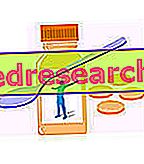What's this
What is chicken liver?
Chicken liver, also commonly called "fegatini", is a food of animal origin that is part of the offal group.

Within the fifth quarter of the animal - which also includes products such as: coratella, tripe, rinds, heart as a food, brain as a food, spleen as a food, language as a food, nerves etc - is probably one of the most consumed cuts in Italy and abroad.
Curiosity
In the food sector, the term chicken and pullet refers to male and female creatures, unsterilized, of an age not exceeding 6 months and weighing less than or equal to 1.5 kg.
From the point of view of biological classification, the chicken is a bird - Aves Class - belonging to the Phasianidae Family and Subfamily Phasianinae, Genus Gallus and gallus species.
They are of the same species, but different in sex, age, reproductive capacity, weight and body composition, the capon, the hen - laying hen or broth - the cockerel, the rooster and the chick.
Chicken liver is classified in the first fundamental group of foods, since it contains proteins with high biological value, specific minerals and vitamins. It also uses more than relevant nutritional concentrations of: other water-soluble vitamins - different from those typical of the group of foods in question, such as folic acid and vitamin B12 or cobalamin - fat-soluble vitamins - vitamin A or retinol and vitamin D or calciferol - other minerals different from those typical of the group of foods in question - for example zinc, selenium and phosphorus - cholesterol, purines, etc. Chicken liver also provides a small concentration of vitamin C or ascorbic acid. The nutritional characteristics of the livers are the fruit of his biological duties; for more information read also: Liver as Food.
Did you know that ...
Chicken liver has the same nutritional properties as that extracted from other birds for food use, such as goose, duck, turkey, guinea fowl etc. The only substantial difference is represented by any special breeding conditions, for example in the fatty goose liver or "foi gras", obtained by favoring fatty liver steatosis by overfeeding the animals fed in immobilization.
Chicken liver can be inserted in almost all diets; the diet against certain metabolic disorders and, in some ways, the nutritional regime of pregnant women are exceptions, or require greater care. The average portion is equal to or less than that of the muscular cuts and the frequency of consumption must respect the identical recommendations for meat. It is always advisable to pay attention to the level of hygienic safety of the product.
Chicken liver is probably the most used in Italy for food; the liver of cattle has a similar consumption level. In France it is surpassed by the fatty goose liver (foie gras).
Nutritional Properties
Nutritional properties of chicken liver
The livers belong to the first fundamental group of foods - nutritional source of essential amino acids, mineral salts and specific vitamins.
They have a medium energy supply, mainly provided by proteins, followed by lipids and finally by few carbohydrates. Peptides have a high biological value, ie they contain all the essential amino acids in the right quantities and proportions with respect to the human protein model. The amino acid profile of chicken liver is largely made up of: glutamic acid, aspartic acid, leucine and lysine; remarkable the presence of phenylalanine. Only when supercharged - as with foie gras - can it contain a high amount of energy lipids - fatty acids organized in triglycerides. The lipid profile of chicken liver should highlight a prevalence of unsaturated fats on saturated fats - the latter still relevant.
The livers do not contain fiber and, regardless of the nutritional status of the slaughtered animal, are rich in cholesterol. They do not contain lactose, gluten or histamine; instead purines abound.
Regarding vitamins, chicken liver contains all the soluble products of group B: thiamine (vit B1), riboflavin (vit B2), niacin (vit PP), pantothenic acid (vit B5), pyridoxine (vit B6), biotin ( vit B8 or vit H), folic acid and cobalamin (vit B12); exclusive of the liver - in reference to the first fundamental group of foods - the presence of ascorbic acid (vit C). The contribution of two liposoluble vitamins is also excellent: retinol (vit A) and calciferol (vit D). Note : folic acid and vitamin C are thermolabile, which is why they do not "resist" cooking by irreversibly deactivating themselves.
As for minerals, chicken liver is distinguished by significant concentrations of: iron - highly bioavailable - zinc, phosphorus, selenium, potassium, copper and molybdenum.

| Chicken livers | |
| Nutritious | Quantity' |
Edible part | 100% |
| water | 76.46 g |
| Protein | 16.92 g |
| Lipids | 4.83 g |
| Saturated fatty acids | 1, 563 g |
| Monounsaturated Fatty Acids | 1, 249 g |
| Polyunsaturated Fatty Acids | 1.306 g |
| Cholesterol | 345.0 mg |
| TOT Carbohydrates | 0.0 g |
| Starch / Glycogen | 0.0 g |
| Soluble Sugar | 0.0 g |
| Food fiber | 0.0 g |
| Soluble | 0.0 g |
| Insoluble | 0.0 g |
| Power | 119.0 kcal |
| Sodium | 71.0 mg |
| Potassium | 230.0 mg |
| Iron | 8.99 mg |
| Football | 8.0 mg |
| Phosphorus | 297.0 mg |
| Magnesium | 19.0 mg |
| Zinc | 2.67 mg |
| Copper | - mg |
| Selenium | - mcg |
| Thiamine or vitamin B1 | 0, 305 mg |
| Riboflavin or vitamin B2 | 1, 778 mg |
| Niacin or vitamin PP | 9.728 mg |
| Vitamin B6 | 0.853 mg |
| folate | 588.0 mcg |
| Vitamin B12 | 16.58 mcg |
| Vitamin C or Ascorbic Acid | 17.9 mg |
| Vitamin A or RAE | 329.0 mcg |
| Vitamin D | 0.0 mcg |
| Vitamin K | 0.0 mcg |
| Vitamin E or Alpha Tocopherol | - mg |
Hygiene
Hygienic aspects of chicken liver as a food
Being the organ mainly responsible for metabolic processes, the liver can contain unwanted molecules; these have a potentially pharmacological, environmental or food derivation - for example dioxins, methylmercury, selenates, etc. This depends above all on the overall lifestyle of the slaughtered animal. Slaughter chickens come exclusively from specific farms, aimed at food, which is why the use of antibiotics and anabolics varies considerably depending on the source of supply.
Did you know that ...
Are Italian farms certainly among the most controlled and regulated in Europe? Moreover, thanks to the regulations of the European Union, products of poor healthiness are unlikely to constitute the food market of the Old Continent.
The same applies to environmental pollutants; in this case, the contamination of the meat takes place above all when the animals feed and drink on land or from compromised aquifers. The hypothesis that feed contains pollutants - especially of a metallic type - is remote, but not impossible.
In general it is advisable to choose guaranteed products, equipped with traceability and traceability - better if national; buying a chicken liver taken from animals slaughtered at home can be a rash choice.
Diet
Chicken liver as a food in the diet
The livers are cheap and very nutritious foods, which lend themselves to the diet of all healthy subjects. In the slimming diet it is instead advisable to reduce any fat for cooking, such as oil or butter, to ensure a normolipidic and low-calorie intake.
Despite the satisfactory ratio of fatty acids (saturated: unsaturated = <1), due to the high cholesterol content, chicken liver is not particularly suitable in case of hypercholesterolemia. In a portion of chicken liver you should find over 100% of the recommended daily cholesterol ration, even for a healthy person.
Chicken liver, rich in proteins of high biological value, is very useful in the diet of those who find themselves in conditions of increased protein requirements; for example: pregnancy and lactation, growth, extremely intense and / or prolonged sports, old age - due to an eating disorder and a tendency to geriatric malabsorption - pathological malabsorption, recovery from specific or generalized malnutrition, debasement etc.
Chicken liver provides a significant amount of phenylalanine and is not among the foods suitable for phenylketonuria.
It is an excellent food source of bio-available iron and, regularly consumed in the diet, optimizes the coverage of nutritional requirements. This is greater and, if not appropriately satisfied, related to the incidence of iron deficiency anemia, in fertile women - especially pregnant women - in marathon runners and vegetarians - especially in vegans. The chicken liver contributes to the coverage of the phosphorus requirement, abundant in the organism - in particular in the bones, in the phospholipids of the cellular membranes and in the nervous tissue etc. The content of zinc and selenium is more than appreciable; these two antioxidant minerals also have many other functions: zinc is essential for hormonal and enzymatic production, selenium for the health of the thyroid gland. It is not considered an essential source of potassium, but still contributes to covering the specific needs - greater in case of increased sweating, for example in sports, increased diuresis and diarrhea; the lack of this ion induces, especially related to lack of magnesium and dehydration, the onset of muscle cramps and general weakness. It is an alkalizing agent - like magnesium - necessary for the functioning of the membrane potential; it can be very useful in the fight against the pathology of primary arterial hypertension.
Chicken liver is very rich in B vitamins, all coenzymatic factors of great importance in cellular processes. It can therefore be considered an excellent support for the functioning of all body tissues. The vitamin D content is important and very useful; also called calciferol, this nutrient is necessary for the functioning of the immune system and for bone metabolism. It is a generally rare vitamin in food although, on the other hand, it is synthesized in the skin during the summer - thanks to sun exposure - and stored precisely in the liver. This food is therefore recommended in the diet of the growing person and also in the preventive one osteoporosis. Very rich in vitamin A, it helps support visual function, cell replication, reproductive function, etc. However, given and considering the potential teratogenic effects related to the nutritional excess of this vitamin, it is advisable for pregnant women to pay attention to the potential excesses.
The content of vitamins normally extraneous to foods of animal origin is interesting, although of secondary importance; we are talking about folic acid - necessary for the replication of nucleic acids and very important in pregnancy - and vitamin C - antioxidant and essential for the immune system. Chicken liver is a food that - due to hygienic, organoleptic and gustatory issues - requires deep cooking, right down to the heart of the food, with temperatures above those of pasteurization. Folate and vitamin C are very vulnerable to high temperatures, as a result of which they tend to degrade; For this reason, chicken liver cannot be considered a major source of these nutrients.
Containing important levels of purines, chicken liver is not recommended for those suffering from hyperuricemia - especially severe, with gouty attacks - and for those who have a greater tendency to calculosis / renal urinary lithiasis.
It is instead pertinent in lactose intolerance, in celiac disease and in histamine intolerance. It is not allowed in the vegetarian and vegan diet. It is inadequate for Hindu and Buddhist food; should not have contraindications for those Muslim and Jewish.
For the hygienic aspects mentioned above, it is necessary to pay a lot of attention to the choice of the source of supply, which must necessarily be of a regular and certified type, and possibly of a high quality standard.
The average portion of chicken liver is 100-150 g (about 120-180 kcal).
Kitchen
Tips for buying chicken liver
To recognize good livers from others of poor quality, we must be able to observe:
- Bright, turgid and NOT dehydrated appearance
- Typical color (depending on the animal species of origin), not spotted or dotted.
Being highly perishable, it is necessary that the chicken liver is always kept in refrigeration or by freezing.
Culinary aspects of chicken liver
Chicken has a very intense flavor but, among the various types offered on the market, it is not the strongest and most demanding on the palate - instead attributed to the liver of large animals, especially the pig. The taste is initially sweet, secondarily accompanied by bitter notes; gives a slight feeling of being held together.
As we have already pointed out, livers are exclusively cooked foods to eat. The preferred processing methods are those for conduction, in a pan or in a casserole.
The most popular recipes based on chicken liver are: Venetian chicken livers - such as pork and beef liver, stewed chicken liver, pasta with chicken livers and cherry tomatoes, chicken liver sautéed with potatoes and wild fennel, pâté of livers on toasted bread, chicken liver with red wine, polenta with chicken livers etc.



